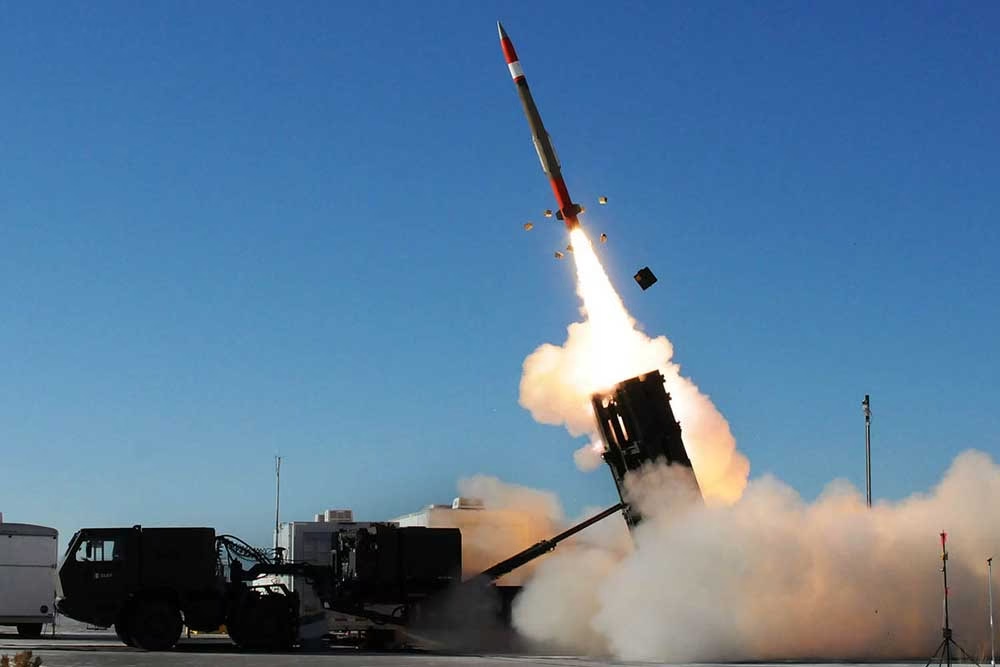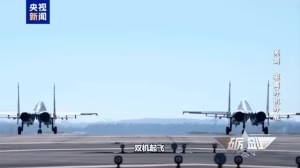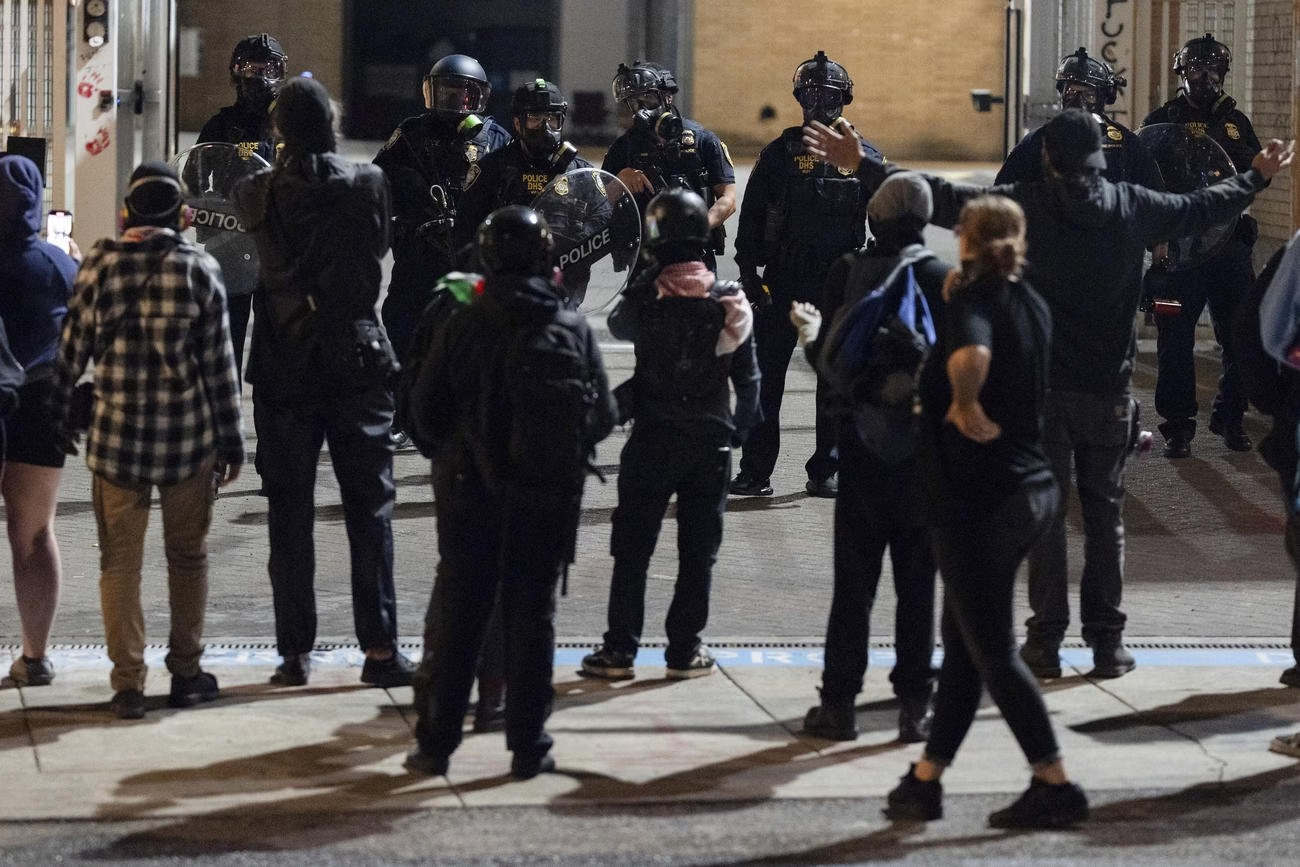Is US ammo production breaking down


Summary
– Pentagon halts Patriot, F-16 missile shipments to Ukraine, citing low U.S. stockpiles.
– The pause threatens Ukraine’s defense against escalating Russian attacks.
– U.S. ammo production struggles to meet global demands, raising concerns.
– NATO allies question America’s reliability as a key arms supplier.
– Is this a temporary setback or a deeper crisis in U.S. defense industry?
The Pentagon has halted shipments of critical air defense missiles and precision-guided munitions to Ukraine, citing concerns over dwindling U.S. stockpiles, a decision that has sent ripples through global defense circles. Announced on July 1, 2025, by Defense Secretary Pete Hegseth, the pause affects vital weapons systems, including interceptors for Patriot air defense systems, precision artillery shells, and missiles for F-16 fighter jets, all of which have been central to Ukraine’s defense against escalating Russian attacks. The White House framed the move as prioritizing “America’s interests first,” with spokesperson Anna Kelly stating, “This decision was made to put America’s interests first following a DOD review of our nation’s military support and assistance to other countries across the globe.”
The pause comes at a critical juncture in Ukraine’s ongoing conflict with Russia, now in its fourth year, raising questions about the U.S. military’s ability to sustain its global commitments. Is this a temporary recalibration or a sign of deeper issues in America’s defense industrial base?
The decision follows a Pentagon review led by policy chief Elbridge Colby, which revealed that U.S. reserves of artillery rounds, air defense missiles, and precision munitions have reached critically low levels. The move, initially planned in early June, coincides with Russia’s largest aerial assault on Ukraine since the conflict began, involving 477 drones and 60 missiles targeting civilian areas in Kyiv and beyond.
Ukraine’s ability to counter such attacks—successfully downing 249 and jamming 226 of the incoming threats—relies heavily on U.S.-supplied systems. The suspension, which includes dozens of Patriot interceptors, over 100 Hellfire missiles, and thousands of 155mm artillery rounds, could reshape the battlefield dynamics and strain U.S. alliances, particularly within NATO.
This development arrives against a backdrop of shifting U.S. foreign policy priorities under President Donald Trump, who has emphasized peace negotiations to end the Ukraine-Russia conflict. Just days before the announcement, Trump met with Ukrainian President Volodymyr Zelenskyy on the sidelines of a NATO meeting in The Hague, expressing openness to further arms sales but signaling a cautious approach to depleting U.S. reserves.
The pause underscores a broader challenge: balancing support for allies with the need to maintain readiness for potential global contingencies, from the Indo-Pacific to the Middle East. As the U.S. navigates these competing demands, the decision has sparked debate about the health of its defense industry and its capacity to meet the needs of both domestic forces and international partners.
Which munitions are paused, and why are they critical for Ukraine?
The halted shipments encompass a range of advanced munitions that have been pivotal to Ukraine’s defense strategy. Among them are interceptors for the Patriot air defense system, designed to counter ballistic and cruise missiles; 155mm precision artillery shells, which provide accurate fire support against Russian ground forces; and missiles like the AGM-88 HARM, JDAM kits, and AIM-120 AMRAAM, which are integral to the operation of F-16 fighter jets recently integrated into Ukraine’s air force. Each system plays a distinct role in Ukraine’s ability to counter Russia’s multifaceted military campaign, which has intensified with large-scale drone and missile barrages targeting urban centers and infrastructure.
The Patriot system, developed by Raytheon, is a cornerstone of modern air defense, capable of intercepting high-speed threats at ranges up to 160 kilometers. Its PAC-3 interceptors use hit-to-kill technology, relying on precise kinetic energy to destroy incoming missiles. These interceptors have been instrumental in protecting Ukrainian cities from Russian Iskander and Kinzhal missiles, with open-source reports indicating successful engagements in Kyiv and Odesa. The suspension of dozens of these interceptors, as reported by NBC News, could leave Ukraine’s air defenses stretched thin, especially as Russia ramps up its aerial campaigns.
The 155mm artillery shells, produced by companies like General Dynamics, are another critical asset. These shells, often equipped with precision-guidance kits like the M982 Excalibur, allow Ukrainian forces to strike Russian positions with pinpoint accuracy at ranges exceeding 40 kilometers. The shells have been used extensively in counter-battery operations, targeting Russian artillery and fortifications in Donetsk and Kharkiv. The pause affects thousands of these rounds, potentially limiting Ukraine’s ability to sustain its defensive lines against Russia’s numerically superior artillery, which experts estimate fires up to 10,000 rounds daily compared to Ukraine’s 2,000.
For Ukraine’s newly acquired F-16s, the AGM-88 HARM, JDAM kits, and AIM-120 AMRAAM are essential. The HARM, an anti-radiation missile, targets enemy radar systems, suppressing Russian air defenses like the S-400. JDAM kits convert unguided bombs into precision-guided munitions, enabling strikes on high-value targets such as command posts. The AIM-120 AMRAAM, with its active radar guidance, provides beyond-visual-range air-to-air capabilities, allowing F-16s to engage Russian aircraft like the Su-35 at distances up to 180 kilometers.
These munitions have been adapted for use on Ukraine’s Soviet-era aircraft, but their integration with F-16s enhances targeting flexibility and effectiveness. The suspension of these missiles, as noted in Politico, could significantly hamper Ukraine’s air operations, particularly as it faces Russia’s robust air defenses.
Ukraine’s reliance on these systems stems from their proven effectiveness in countering Russia’s evolving tactics. Open-source imagery has shown F-16s conducting low-level strike missions with GBU-39 Small Diameter Bombs, while Patriot systems have intercepted advanced Russian missiles.
The pause in deliveries, coming at a time when Ukraine is fending off intensified Russian assaults, raises concerns about gaps in its defensive capabilities. As Russia adapts its strategies, including the use of decoy drones to overwhelm air defenses, the absence of these munitions could force Ukraine to ration its resources, potentially ceding ground or exposing civilian areas to greater risk.
Why did the Pentagon hit the brakes? Official and unofficial reasons
The Pentagon’s decision to pause munitions shipments stems from a sobering reality: U.S. stockpiles are running low. A review led by Elbridge Colby, the Pentagon’s policy chief, concluded that reserves of artillery shells, air defense missiles, and precision-guided munitions have reached levels that could compromise America’s readiness for other global contingencies.
White House spokesperson Anna Kelly emphasized that the move prioritizes “America’s interests first,” reflecting a strategic shift under the Trump administration to safeguard domestic military capabilities. The review, initiated in early June, highlighted the strain caused by three years of sustained support for Ukraine, which has consumed billions in military aid, including $31.7 billion through 55 emergency Presidential Drawdown Authority actions since August 2021.
The official rationale centers on the need to maintain sufficient stockpiles for potential conflicts in regions like the Indo-Pacific, where tensions with China over Taiwan are a growing concern. The U.S. has also committed significant resources to Israel and other partners, further stretching its reserves.
For instance, Foreign Military Sales agreements with Taiwan and Israel include thousands of 120mm tank rounds and precision munitions, with deliveries scheduled through 2026. The Pentagon’s fear is that continued depletion could leave it unprepared for a multi-front crisis, a scenario that has gained urgency as China, Russia, and Iran strengthen their military cooperation.
Unofficially, the decision reflects broader geopolitical calculations. The Trump administration has prioritized peace negotiations to resolve the Ukraine-Russia conflict, as evidenced by talks in Jeddah in March 2025, where Ukraine expressed willingness for a 30-day ceasefire. Some analysts suggest the pause in shipments could be a lever to push Ukraine toward negotiations, aligning with Trump’s stated goal of ending the conflict. This approach contrasts with the Biden administration’s policy of sustained military support, raising questions about whether the halt signals a recalibration of U.S. commitments in Eastern Europe.
The Pentagon’s concerns are not new. As early as 2023, Army Secretary Christine Wormuth warned that U.S. production of 155mm shells, then at 20,000 per month, was insufficient for Ukraine’s needs. Efforts to ramp up production to 75,000 rounds monthly by the end of 2025 have shown progress, with new facilities like the General Dynamics plant in Mesquite, Texas, set to produce 30,000 shells monthly.
However, experts like Michael Kofman of the Carnegie Endowment for International Peace note that even these targets may fall short of Russia’s output, which is estimated to exceed 1 million shells annually. The gap underscores the challenges facing the U.S. defense industry, which has struggled to scale production rapidly enough to meet wartime demands.
State of the U.S. defense industry: crisis or temporary setback
The U.S. defense industrial base, once the arsenal of democracy, is grappling with significant challenges in meeting the demands of modern warfare. The pause in Ukraine shipments highlights a critical issue: the industry’s capacity to produce key munitions like Patriot interceptors, 155mm shells, and F-16-compatible missiles has not kept pace with global needs.
Major manufacturers like Raytheon and Lockheed Martin face bottlenecks in supply chains, particularly for rare earth elements critical to advanced electronics in missiles like the AIM-120 AMRAAM. Labor shortages and outdated production facilities further complicate efforts to scale up output, with some plants relying on decades-old machinery.
Efforts to address these issues have been underway for years. The Pentagon has invested heavily in expanding production, with the Army aiming to increase 155mm shell output to 100,000 per month by late 2025, up from 14,000 a few years ago.
The Mesquite, Texas, facility, opened in 2024, is a step toward this goal, but it remains a work in progress, with only one of three planned production lines operational. Similarly, production of Guided Multiple Launch Rocket Systems [GMLRS], another critical munition, is targeted to rise from 6,000 to 15,000 annually by 2025. Yet, these efforts face headwinds, including reliance on foreign suppliers for components and competition for resources with next-generation programs like hypersonic weapons.
Comparatively, adversaries like Russia and China have prioritized munitions production. Russia’s artillery output, bolstered by domestic and North Korean supplies, outpaces Western efforts, while China’s defense industry has expanded rapidly, producing advanced systems like the DF-21D anti-ship missile.
The U.S. struggles to match this scale, partly due to post-Cold War consolidation of its defense sector, which reduced production capacity as the threat of large-scale conflict seemed to wane. The Pentagon’s 2025 budget request, which cut $1.2 billion from precision munitions funding, reflects competing priorities, with investments in maritime strike weapons taking precedence to counter China’s naval buildup.
The industry’s challenges are not insurmountable, but they require sustained investment and innovation. Advances like 3D printing for missile components and automation in artillery production could close the gap, but scaling these technologies takes time. The Pentagon’s mantra of “production is deterrence,” coined by Undersecretary William LaPlante, underscores the urgency, yet progress remains uneven. The pause in Ukraine shipments may be a temporary measure, but it exposes vulnerabilities that could undermine U.S. military readiness if left unaddressed.
Geopolitical fallout: What does the halt mean for Ukraine and NATO?
The suspension of munitions deliveries poses immediate challenges for Ukraine, which relies on U.S. support to counter Russia’s relentless attacks. The loss of Patriot interceptors and 155mm shells could weaken Ukraine’s ability to protect its cities and hold defensive lines, particularly in contested regions like Donetsk and Sumy.
Recent Russian assaults, including a massive barrage of 537 aerial weapons, underscore the intensity of the threat, with Ukraine’s air defenses already stretched to their limits. The pause, as reported by the Washington Examiner, comes at a time when Ukraine’s ability to intercept Russian missiles and drones is critical to preventing civilian casualties and maintaining morale.
NATO allies, heavily dependent on U.S. leadership, are expressing concern about the reliability of American support. The decision has sparked unease among European nations, many of which have provided substantial aid to Ukraine, including 178 long-range artillery systems and 8,214 short-range air defense missiles.
Countries like the Netherlands, Denmark, and Norway have committed F-16s, while the UK and Germany have pledged billions in military assistance for 2025. The U.S. pause could pressure these allies to fill the gap, but their own defense industries face similar production constraints. For instance, Germany’s recent delivery of 14,000 155mm rounds came from both Bundeswehr and industry stocks, indicating limited surplus capacity.
The broader trend is one of growing European dependence on U.S. weapons, coupled with slow progress in building indigenous defense capabilities. Initiatives like the European F-16 Training Center in Romania highlight efforts to bolster Ukraine’s air force, but without sufficient munitions, these platforms risk becoming symbolic rather than transformative. The pause may push NATO members toward diversifying their supply chains, potentially turning to manufacturers in South Korea or Israel, though such shifts would require years to implement effectively.
The decision also raises questions about U.S. credibility as a global security partner. Allies in the Indo-Pacific, such as Taiwan, are watching closely, as their own defense relies on U.S. commitments like the delivery of HIMARS and Stinger missiles by 2026. If the U.S. cannot sustain support for Ukraine, doubts may grow about its ability to uphold promises elsewhere, potentially emboldening adversaries like China and Russia.
What does the decision mean for Ukraine’s F-16 deliveries?
The integration of F-16 fighter jets into Ukraine’s air force has been a long-awaited milestone, with allies like the Netherlands, Denmark, and Norway pledging around 85 operational aircraft. The first jets, delivered in mid-2024, have already conducted combat air patrols and strike missions, using munitions like the AIM-120 AMRAAM and GBU-39 Small Diameter Bombs. However, the Pentagon’s pause in deliveries of AGM-88 HARM, JDAM kits, and AIM-120 AMRAAM missiles threatens to undermine the jets’ effectiveness, potentially limiting Ukraine’s ability to challenge Russian air superiority and ground defenses.
The delivery schedule for F-16s remains on track, with Denmark and the Netherlands expected to transfer additional jets by early 2026. Norway has also provided 10 non-operational F-16s for spare parts, addressing shortages that have delayed deliveries from Belgium. Training for Ukrainian pilots at the European F-16 Training Center in Romania is progressing, with pilots already conducting reconnaissance and strike missions. However, the jets’ combat utility hinges on their munitions, which are now in jeopardy.
The AGM-88 HARM, produced by Raytheon, is designed to home in on enemy radar emissions, making it critical for suppressing Russian air defense systems like the S-400, which can engage targets at ranges up to 400 kilometers. Without HARM, F-16s are less capable of operating in contested airspace, increasing their vulnerability to Russian surface-to-air missiles. JDAM kits, which transform unguided bombs into precision munitions, enable F-16s to strike fortified targets with minimal collateral damage, a capability Ukraine has relied on to target Russian command posts.
The AIM-120 AMRAAM, with its active radar guidance, allows F-16s to engage enemy aircraft at long ranges, countering Russia’s Su-35 and MiG-31 fighters. The suspension of these missiles, as reported by NBC News, could render F-16s less effective, forcing Ukraine to rely on older Soviet-era aircraft with adapted Western munitions, which lack the same precision and flexibility.
The political implications are equally significant. The F-16s were expected to signal a major escalation in Ukraine’s capabilities, deterring Russian advances and reassuring NATO allies of Western commitment. The pause in munitions deliveries risks undermining this “deterrence effect,” potentially signaling to Moscow that Ukraine’s air force faces logistical constraints.
This could embolden Russia to intensify its air campaigns, particularly as it adapts tactics to overwhelm Ukraine’s defenses with decoy drones and hypersonic missiles. The decision also raises questions about U.S. reliability, especially as allies like the Netherlands and Denmark have invested heavily in equipping Ukraine’s F-16s.
Russian air defenses, particularly the S-400, pose a formidable challenge. Equipped with 40N6 missiles capable of engaging targets at extreme ranges, the S-400 has forced Ukrainian pilots to operate at low altitudes, increasing their exposure to short-range systems like the Pantsir-S1. Without sufficient HARM and AMRAAM missiles, F-16s may struggle to counter these threats, limiting their role to defensive patrols rather than offensive strikes. The pause could also strain Ukraine’s ability to conduct Suppression of Enemy Air Defenses [SEAD] missions, a critical tactic for neutralizing Russia’s layered air defense network.
Technological and tactical adaptations: How can the U.S. and Ukraine respond?
Ukraine and its allies are exploring alternatives to mitigate the impact of the paused shipments. European systems like the German IRIS-T and Franco-Italian SAMP/T offer viable substitutes for air defense, with Germany recently delivering IRIS-T missiles to counter Russian drones.
These systems, while effective, lack the Patriot’s range and hit-to-kill precision, requiring Ukraine to adapt its defensive strategies, such as deploying layered defenses with shorter-range systems like the Stinger. Ukraine has also begun developing domestic munitions, including guided artillery shells, though production remains limited compared to Western output.
The U.S. is pursuing technological innovations to address its production bottlenecks. The Pentagon has invested in advanced manufacturing techniques, such as 3D printing for missile components, which could reduce reliance on scarce materials. Automation is being integrated into facilities like the Mesquite plant, aiming to boost 155mm shell production. However, scaling these technologies to meet wartime demands will take years, and the U.S. must navigate supply chain vulnerabilities, including dependence on Chinese-controlled rare earth elements.
Tactically, Ukraine could optimize its existing stockpiles by prioritizing high-value targets and employing electronic warfare to disrupt Russian missile guidance. Ukrainian F-16s have been equipped with AN/ALQ-131 electronic countermeasures pods, enhancing their survivability against Russian air defenses. Adapting Soviet-era aircraft to use Western munitions, as Ukraine has done with GBU-39 bombs, could also extend its capabilities, though this approach sacrifices precision compared to F-16 operations.
European allies are stepping up to fill the gap. The Netherlands has pledged €2 billion for Ukraine in 2025, including support for drone production, while France has committed €2 billion for anti-tank and air defense missiles. These contributions, while significant, cannot fully replace U.S. supplies, particularly for advanced systems like the Patriot. Ukraine may need to shift toward asymmetric tactics, such as increased use of drones for precision strikes, to compensate for the munitions shortfall.
Looking ahead: Can the U.S. defense industry catch up?
The Pentagon’s plans to bolster munitions production are ambitious but face significant hurdles. The 2026 defense budget prioritizes expanding capacity for 155mm shells, GMLRS, and air defense missiles, with multiyear procurement contracts aimed at stabilizing supply chains.
The Army’s goal of producing 100,000 155mm shells monthly by late 2025 is within reach, but experts warn that even this output may not match Russia’s production, let alone meet the needs of multiple allies. Investments in facilities like Mesquite and partnerships with firms like IMT Defense are critical, but scaling requires overcoming logistical and geopolitical challenges, including China’s dominance over rare earths.
The broader trend points to a need for systemic reform in the U.S. defense industry. Decades of underinvestment and consolidation have left it ill-equipped for high-intensity conflicts, a lesson driven home by Ukraine’s consumption of munitions. The Pentagon’s focus on next-generation technologies, such as the AIM-260 JATM to replace the AIM-120 AMRAAM, has diverted resources from conventional production. While the AIM260 promises longer range and enhanced performance, its delayed production underscores the industry’s struggle to balance innovation with immediate needs.
Comparatively, China’s defense industry has prioritized rapid scaling, producing systems like the HQ-9 air defense missile, which rivals the Patriot in range and capability. Russia, despite Western sanctions, has maintained robust artillery production through domestic and North Korean supply chains. The U.S. must address these gaps to remain competitive, particularly as global threats multiply. Failure to do so risks ceding strategic advantages to adversaries, especially in regions like the Indo-Pacific.
Temporary pause or strategic vulnerability?
The Pentagon’s decision to halt munitions shipments to Ukraine reflects a delicate balancing act between supporting allies and preserving U.S. military readiness. By prioritizing domestic stockpiles, the U.S. aims to safeguard its ability to respond to global contingencies, but the move comes at a cost.
Ukraine faces immediate challenges in countering Russian aggression, while NATO allies grapple with questions about America’s reliability. The pause exposes deeper vulnerabilities in the U.S. defense industrial base, which struggles to meet the demands of modern warfare despite recent investments.
From a strategic perspective, the decision highlights the limits of America’s role as the world’s arsenal. The reliance on a strained industrial base, coupled with competing global commitments, raises doubts about the U.S.’s capacity to sustain prolonged support for allies like Ukraine, Taiwan, and Israel.
While innovations and increased production offer hope, the timeline for scaling remains uncertain. As adversaries like Russia and China continue to bolster their capabilities, the U.S. must confront a critical question: Can it rebuild its defense industry fast enough to maintain its global influence, or will this pause signal a broader retreat from its commitments? The answer will shape the future of international security for years to come.
***
Follow us everywhere and at any time. BulgarianMilitary.com has responsive design and you can open the page from any computer, mobile devices or web browsers. For more up-to-date news, follow our Google News, YouTube, Reddit, LinkedIn, and Twitter pages. Our standards: Manifesto & ethical principles.
FAQ: What else should you know about the U.S. pause in weapons deliveries to Ukraine?
Why are JDAM and HARM missiles so hard to mass-produce quickly?
JDAMs and HARMs are not just steel casings with explosives — they’re packed with advanced guidance systems, sensors, and electronics that require specialized components and tight manufacturing tolerances. Production is further slowed by supply chain bottlenecks for semiconductors and military-grade materials, many of which are sourced from a limited number of certified suppliers.
Can other countries fill the gap left by the U.S. pause in supplies to Ukraine?
Some U.S. allies — such as Germany, the U.K., and South Korea — have capable defense industries and have contributed significantly to Ukraine’s defense. However, many of the paused systems (like Patriot interceptors and JDAM kits) rely on U.S.-specific technology, making replacement by third parties difficult due to licensing, integration, and inventory limitations.
What’s happening with the rest of the U.S. military aid to Ukraine that isn’t affected by the pause?
Shipments of non-precision munitions (like unguided 155mm shells), small arms, drones, communications gear, and engineering equipment continue under existing aid packages. The pause is narrowly focused on high-end interceptors and precision weapons that are in critically low supply or needed for other U.S. strategic contingencies.
What does “strategic shortage” really mean — is it an actual shortage or just a precaution?
The term reflects both real inventory stress and planning conservatism. While the U.S. may still have stockpiles of certain munitions, Pentagon planners are weighing global scenarios — including possible conflicts in the Indo-Pacific — and want to ensure the U.S. isn’t left under-equipped in the event of simultaneous crises.
How we confirmed this story:
- BulgarianMilitary.com cross-references open-source intelligence, including battlefield maps and geolocated footage, to confirm military movements and resource claims. We analyze official statements, expert insights from defense analysts, and economic data to ensure accuracy.
- Social media posts are scrutinized and validated against primary sources, such as government reports and on-the-ground accounts. Our rigorous process guarantees reliable, fact-based reporting.













